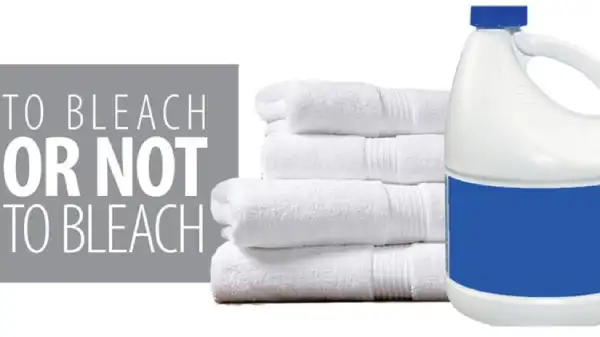
Rainbow Restoration advises caution when considering bleach for cleaning and mold removal.
|
To bleach or not to bleach that is the question. Whether or not it is a noble endeavor depends highly upon the surface in question – and your housekeeping goals. Bleach is a malodorous menace in some facets, but a remarkable remedy in others. Where’s the quintessential line in the sand?
Many Uses for Bleach
For cleaning and sanitizing, bleach has a lot to offer, from disinfecting hard surfaces to brightening your kid's dingy socks. What are some of its best uses for bleach?
- Brightening whites
Commonly used in the laundry room, bleach is renowned for its whitening power. - Disinfection
Disinfection and sanitizing kill 100 percent of germs on compatible surfaces. For this purpose, bleach is a great product, however, cleaning should be done first. Bleach is a disinfector, not a cleaner. For disinfection purposes, it should be used after cleaning – not as a catch-all - to remove oils and particles that can prevent bleach from doing its duty. Where do bleach’s disinfection capabilities excel?- Butcher block cutting boards and countertops
- Household surfaces - countertops, floors, tablecloths, toys, lawn furniture
- Trash cans
- Toilets
- Mold and Stain Remover.
In a solution of ¾ cup bleach to a gallon of water, bleach is fabulous at eliminating mold stains, however, bleach does not kill mold nor does it penetrate well into materials contaminated with mold like drywall. Use it everywhere from bathroom surfaces to compatible fabrics and even outdoor surfaces like concrete and siding. - Adding a little shine to porcelain and glass
White porcelain dishes (not antiques!), glasses, and windows can all be made to sparkle with a little bleach. Just be sure to follow instructions carefully.- White porcelain: Open a window, cover, and soak undiluted in the sink for 15 minutes, rinse well, then wipe dry.
- Glasses: A teaspoon of soapy sink water, rinse, and then wipe dry.
- Windows: A tablespoon per gallon
Mistakes to Avoid with Bleach
Used the wrong way, bleach can be destructive – to surfaces and your body. Here are common mistakes to avoid if using bleach:
- Incorrect usage
As stated above, bleach is best suited to disinfection on hard surfaces (think: microorganisms), not cleaning (think: dirt). There are much better options for meeting cleaning needs. - Too much
Many people have a hard time understanding that more is not necessarily better. Adding more than advised waste products, and dumping this chemical irritant into the environment in higher concentrations to irritate your lungs, eyes, and skin. To most surfaces (including children’s toys), you only need one tablespoon per gallon. For nonporous surfaces (think: bathrooms, and kitchens), use ¼ cup per gallon. For clothes, ½ cup per large load. Not working? It may be old. Bleach degrades quickly and solutions should be made fresh daily. - Mixing
Though safe for use with laundry detergent, bleach should never be mixed with vinegar, lemon juice, ammonia (including all-purpose cleaners), toilet bowl cleaner, and rust remover. When mixed, poisonous gases will result. - No protection
Bleach can soak into your hands, irritating your skin and later your face and eyes through touch. (A scary thought for those with small children.) Buy yourself some extra fancy gloves, and commit to wearing them. - Clothing carelessness
When cleaning with bleach, be certain to wear your absolute junkiest clothes, as even the most minute amount can destroy them – seemingly from thin air. When using it for laundry, use it only on whites - in proper concentrations - to prevent clothing destruction.
Professional Mold Removal and Remediation Services
Mold damage so bad a carload of bleach wouldn’t cover it? Rainbow Restoration® can help. Call our 24/7 emergency line schedule an appointment online to learn more about mold removal services for your home or business.
For Further Reading:
How to Prevent Mold in the Most Likely Places
